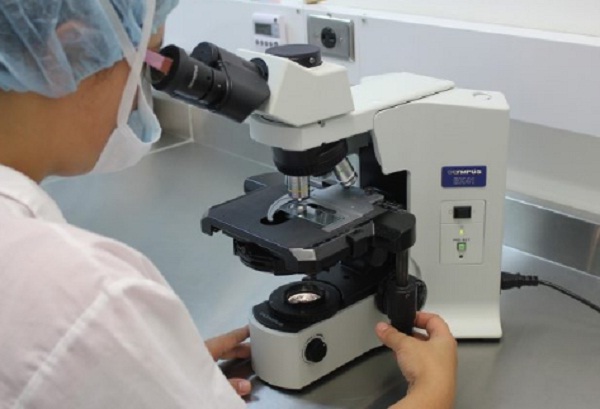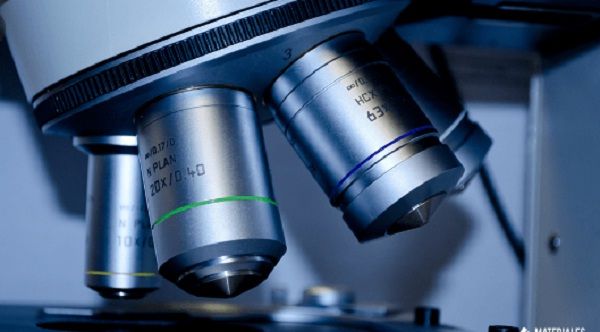What is the microscope?, takes us back to remember the reason why man invented this instrument, which is none other than to avoid the disease, to conduct research on these. In order to achieve good health and the preservation of life in such a way.
How many types of microscope are there?
Since their appearance to the present they have evolved much four centuries ago that allow the observation of all forms of microscopic life. Are employed in various disciplines of the sciences and in technology. An approximate number of twenty-eight different microscopic.
What are the types of microscope?
The microscope is an instrument that is used to observe small samples where the ability to see the object or body is increased to make its analysis possible. There are different classes where they are grouped according to the function they fulfill. From the first one that was discovered to the present day. Each with a specific purpose.
They are classified into: According to the lens number system. On the nature of the lighting system. It has to do with lighting. With reference to the number of eyepieces. By the configuration of the elements. According to the darkness and contrast. According to the images and reflection of the same.
Of the study of the molecules present in the sample. Using the use of sunlight among others.
Types of microscope with their names
Among the various types of microscopes that have been invented to meet the needs of knowing the world nature of bacteria, viruses and parasites. That affect life on the planet we have the following are counted: Scanning electron microscope, transmission, optical.
Compound, simple, ultraviolet light, fluorescence, petrographic, dark field, polarized light, confocal.De the same is true of ions in the field, of scanning probe, of tunnel effect, of atomic force, virtual. As for the transmitted and reflected light, monoculars, binoculars and trinoculars.
Digital, inverted, stereoscopic. Phase contrast, differential interference, x-ray, solar.


Microscopes and their functions
The simple one refers to an instrument that is characterized by having lenses to visualize the samples with a lens or magnifying glass. You get very good magnified images. The compound microscope, this apparatus exhibits two or more observation lenses that increase the image of the samples.
It incorporates in its presentation different lenses in the objective as in the eyepiece to achieve image quality.
Microscopes according to the number of lenses
Monocular microscope, it is simple because it has a single eyepiece that allows you to see the samples with only one eye. Used in classrooms for demonstration of parts and species. It is uncomfortable since both eyes cannot be used. For this reason it is not used by professionals. Ideal for beginners, students.
The binoculars, is a purely optical tool, has two eyepieces that is, you can look through both eyes in the analysis of bodies. The image from the lens is blurred in two by the prism and it is more convenient to work. The binoculars are adaptable to the user. They are most often used in research laboratories.
The trinocular microscope has three eyepieces, one connects the observation imaging camera and the other two allow direct observation of the matter to be studied. Its presentation is manufactured with the possibility of connecting a digital camera to record video or photograph the species studied.
Digital microscope, who has a camera to digitally capture the images in analysis. With a screen where in the present time the images are seen. He has only one eyepiece and everything he sees is transmitted to a computer. Stores the images on the computer on the memory card.


Names and functions of microscopes
Inverted microscope, is one that inverts the light source and the objective, illuminating the sample from above and locating the objective under the stage. It allows the visualization of the cells and tissues to be carried out from the bottom of the container that contains it. That is, its configuration is contrary to the traditional one.
It gives the facility to moisturize the involved species of living plants. The stereoscopic, an instrument consisting of two binoculars each projects a different image. These images are combined to produce a three-dimensional effect also using two lenses one for each eyepiece.
Staining of the sample is used to increase the contrast with the bright in the background. In this way, all the details in the studied object are appreciated. Optical microscope, uses visible light because it has a focus of light directed at the sample, so that that light reaches the objective and the eyepiece so that the researcher can observe.
It is the most popular but it is subject to light diffraction and its maximum magnification is 1500x. The electronic microscope, the sample is illuminated by electrons, these hit the sample inside the vacuum chamber. It means that the electrons scattered in the sample after being impacted are captured to build the image.
Microscopes with illumination system
Ultraviolet light microscope, illuminate the sample with light ultraviolet, a better resolution and contrast is achieved than with visible light. Specimens are observed that are apparently transparent in visible light. Polarized light microscope, is known as petrographic microscope, is of the optical type and two polarizers are added. That is to say that the light oscillates in definite shape, it is used to view crystalline samples of precious stones and mineral. Fluorescence in microscopes also has its purpose.
Which generates the images in the analysis bodies, it is it deals with observing substances that absorb light and emit it, for this it is they use special xenon or mercury lamps. It also consists of filters that they isolate the light from the sample.
Light transfer microscopes
Transmitted light microscopes, to facilitate work with this type of microscope is necessary to prepare the sample in very thin sheets. The light passes through the sample from under the platen to the transparent one. Reaching the target to be seen by the eyepiece. It is widely used. The one of light reflected, the species is illuminated from the top of the platen and is reflected towards the objective and the eyepiece. Employee paca observe opaque samples metal, ceramic, etc. In addition to the aforementioned written there are others that have been developed for a certain type of sample
Microscopes with other elements
Confocal microscope, is a kind of fluorescent microscope. In a definite way, it illuminates the object point by point gradually. Building the scanned images at the end of the process. Darkfield microscope, the light illuminating the sample is made obliquely, and then they pass to the objective.
It is used on transparent species and without using staining to see them. Phase contrast: Light passes through the sample at different speeds and segments. Under the principle that light propagates depending on medium. Generating the image of the body and live cells are observed.
What is the microscope?, is to have an idea about all the technological advances in the area of microscopy with the design of this instrument. In order to eradicate various health conditions at a global le el to ha e a full and long-lived life. I invite you to open as many times as you need or any other of our items.

